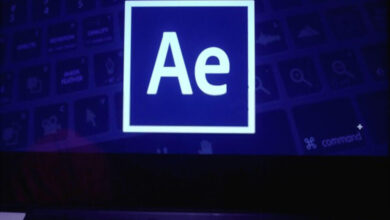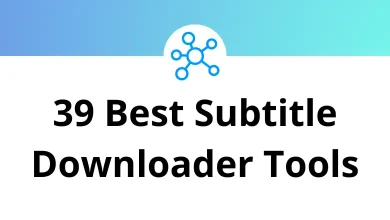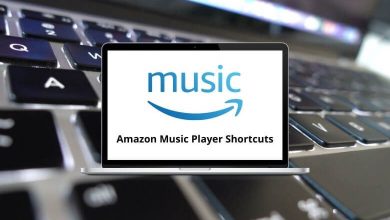10 Benefits of eBooks for Students and Educators You Can’t Ignore
Education is no longer limited to chalkboards, libraries, and heavy printed textbooks. With digital transformation touching every corner of our lives, eBooks have quietly become one of the most powerful learning tools available today. For students benefits, they bring flexibility, convenience, and affordability. For educators benefits, they offer efficiency, collaboration, and new ways to engage learners.
Table of Contents
- 1 1. Easy Accessibility Anytime, Anywhere
- 2 2. Cost-Effective Compared to Print Books
- 3 3. Environmentally Friendly
- 4 4. Searchable and Interactive
- 5 5. Space-Saving and Organized
- 6 6. Instant Delivery and Updates
- 7 7. Adjustable Reading Experience
- 8 8. Collaborative and Shareable
- 9 9. Encourages Independent Learning
- 10 10. Prepares Students for the Digital Future
- 11 Conclusion
Unlike traditional books, eBooks are not just about reading words on a screen. They are interactive, searchable, and highly adaptable to different learning styles. Whether you are a college student preparing for finals, a high school teacher creating lesson plans, or a lifelong learner exploring new subjects, eBooks are designed to make education more effective and accessible.
In this guide, we’ll break down the 10 key benefits of eBooks for students and educators. By the end, you’ll see why digital reading isn’t just a trend it’s the future of learning.
1. Easy Accessibility Anytime, Anywhere
Gone are the days of lugging around heavy textbooks in a backpack. With eBooks, your entire library fits in your tablet, Kindle, or even your smartphone.
- Students can study while commuting, at the library, or even during a lunch break.
- Teachers can carry reference material and lesson plans without extra weight.
- Most eBooks are available offline once downloaded, so internet access isn’t always necessary.
Imagine preparing for an exam while waiting in line for coffee it’s that convenient.
Tip: If you’re using a Kindle or tablet, learning some quick Kindle Shortcuts can save you time and make navigation smoother.
2. Cost-Effective Compared to Print Books
Textbooks are notoriously expensive. Many college students spend hundreds of dollars each semester on required reading. eBooks often come at a fraction of the price.
- Many educational publishers release cheaper digital editions.
- Open Educational Resources (OERs) offer free eBooks for learners worldwide.
- No extra costs for printing, shipping, or handling.
For educators, this also means budget-friendly teaching resources. Instead of asking students to buy costly editions, they can recommend affordable (or even free) eBook versions.
3. Environmentally Friendly
Printing millions of physical textbooks takes a toll on the environment trees, ink, and energy all add up. eBooks help reduce this impact.
- No paper waste.
- No fuel costs for transportation.
- Easy to update content without reprinting.
For eco-conscious students and teachers, eBooks align perfectly with sustainability goals. Schools adopting digital libraries also show their commitment to greener practices.
4. Searchable and Interactive
Remember flipping through endless pages just to find a single definition or formula? With eBooks, that hassle is gone.
- Built-in search functions let students find keywords instantly.
- Highlighting and note-taking tools make revision easier.
- Some eBooks even include interactive quizzes, videos, and 3D diagrams.
For example, an engineering student studying AutoCAD can instantly search terms instead of browsing indexes. Similarly, an educator teaching Photoshop could use an interactive design eBook to demonstrate real-world examples, Check out on Photoshop Shortcut Keys.
5. Space-Saving and Organized
Physical books require storage, which is often a problem for students living in hostels or small apartments. eBooks solve that.
- A single device can store thousands of titles.
- Cloud storage ensures access across multiple devices.
- No risk of losing pages, damaging spines, or misplacing books.
For teachers, eBooks also mean less clutter in the office. Instead of shelves stacked with guides and manuals, everything is neatly stored in digital format.
6. Instant Delivery and Updates
Need a book urgently for an assignment tomorrow? eBooks are just a click away.
- Students can purchase or download books instantly.
- Educators can share updated reading lists in real-time.
- Publishers often release updated editions directly to devices.
This eliminates the waiting period associated with shipping physical books. Plus, updated eBooks ensure students always have the latest, most accurate information.
7. Adjustable Reading Experience
Everyone learns differently. Some prefer large fonts, while others need high-contrast modes. eBooks adapt to these preferences.
- Adjustable font size and style for easier reading.
- Night mode to reduce eye strain during late-night study sessions.
- Text-to-speech features help auditory learners.
This personalized experience supports inclusivity, ensuring students with visual impairments or learning difficulties can still access material comfortably.
Learning doesn’t have to be a solo activity. eBooks open up new opportunities for collaboration.
- Students can share notes or highlights with classmates.
- Teachers can annotate eBooks and distribute them to students.
- Some platforms integrate with apps like Google Docs or Microsoft Teams, making it easier to discuss content in real time.
For instance, if an educator is teaching with Google Docs Shortcuts or Google Sheets Shortcuts, eBook references can seamlessly tie into collaborative assignments.
9. Encourages Independent Learning
eBooks give students more control over their learning pace.
- They can re-read chapters, pause for practice, or explore links to additional resources.
- Interactive exercises within eBooks encourage self-assessment.
- Multilingual eBooks support global learners.
Educators benefit too by assigning self-study eBooks, they can focus class time on deeper discussions rather than just covering basics.
10. Prepares Students for the Digital Future
In almost every profession today, digital literacy is a must. Using eBooks isn’t just about reading it’s about learning to adapt to digital workflows.
- Students become comfortable with devices, apps, and digital navigation.
- Teachers can integrate multimedia-rich eBooks into lessons, making classes more engaging.
- Skills like using search tools, hyperlinks, and digital libraries translate directly into the workplace.
For students aiming for creative careers in design, video editing, or coding, working with eBooks prepares them for tools like InDesign Shortcut Keys, Premiere Pro Shortcut Keys, or even coding platforms like Visual Studio Shortcuts.
Conclusion
eBooks aren’t just the future of education they’re the present reality. From saving money and reducing clutter to encouraging independent learning and preparing students for the digital workplace, the benefits are undeniable.
For students, eBooks offer flexibility and freedom. For educators, they bring efficiency and collaboration. Together, they create a more inclusive, engaging, and sustainable learning environment.
So whether you’re cramming for finals, prepping your next lecture, or just exploring new subjects, eBooks are your best companion.
READ NEXT:





